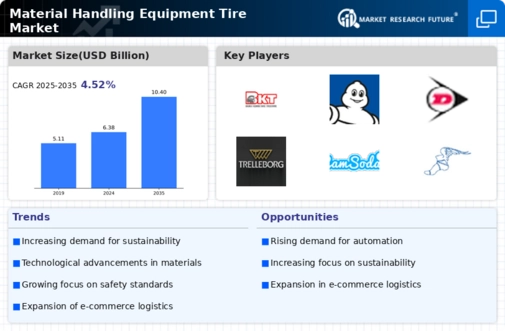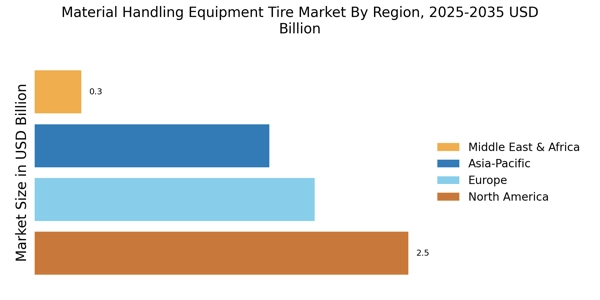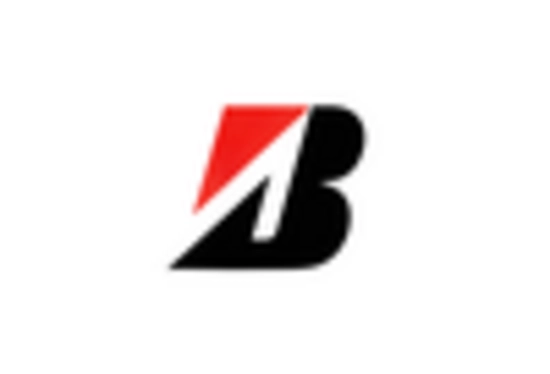Rising Demand for E-commerce
The surge in e-commerce activities has led to an increased need for efficient material handling solutions. As online shopping continues to expand, warehouses and distribution centers are under pressure to optimize their operations. This trend drives the demand for advanced material handling equipment, including specialized tires designed for various applications. The Material Handling Equipment Tire Market is witnessing a notable increase in tire sales, as companies seek to enhance their logistics capabilities. In 2025, the market is projected to grow significantly, with a focus on tires that offer durability and performance in high-traffic environments. This demand is likely to encourage manufacturers to innovate and develop tires that cater specifically to the needs of e-commerce logistics.
Focus on Safety and Compliance Standards
Safety regulations and compliance standards are becoming increasingly stringent across various industries, influencing the Material Handling Equipment Tire Market. Companies are now prioritizing the safety of their operations, which includes ensuring that their material handling equipment is equipped with high-quality tires. This focus on safety is driving the demand for tires that meet or exceed regulatory requirements. In 2025, it is expected that manufacturers will respond to this trend by developing tires that not only enhance safety but also improve overall operational efficiency. The emphasis on compliance may lead to a shift in purchasing decisions, with companies opting for tires that provide better performance and safety features.
Sustainability and Eco-friendly Practices
The growing emphasis on sustainability is impacting the Material Handling Equipment Tire Market. Companies are increasingly seeking eco-friendly tire options that align with their sustainability goals. This trend is prompting manufacturers to explore the use of renewable materials and environmentally friendly production processes. In 2025, the market is likely to see a rise in the availability of sustainable tire options, as businesses aim to reduce their carbon footprint. This shift not only caters to consumer preferences but also positions companies favorably in a market that values environmental responsibility. As a result, the demand for sustainable tires may drive innovation and lead to the development of new products that meet both performance and environmental standards.
Technological Advancements in Tire Manufacturing
Innovations in tire manufacturing technology are reshaping the Material Handling Equipment Tire Market. The introduction of advanced materials and production techniques has led to the development of tires that are not only more durable but also more efficient. For instance, the use of synthetic compounds and improved tread designs can enhance traction and reduce wear, which is crucial for material handling equipment operating in demanding environments. As manufacturers adopt these technologies, the market is expected to see a rise in the availability of high-performance tires. This shift may result in a competitive landscape where companies that invest in research and development can gain a significant advantage, potentially leading to increased market share.
Growth of the Construction and Manufacturing Sectors
The expansion of the construction and manufacturing sectors is a key driver for the Material Handling Equipment Tire Market. As these industries grow, the demand for material handling equipment, including forklifts and pallet jacks, increases correspondingly. This growth is reflected in the rising sales of tires specifically designed for heavy-duty applications. In 2025, the market is anticipated to benefit from the ongoing infrastructure projects and manufacturing activities, which require reliable and efficient material handling solutions. Consequently, tire manufacturers are likely to focus on producing tires that can withstand the rigors of construction sites and manufacturing floors, thereby enhancing their product offerings to meet industry demands.


















Leave a Comment